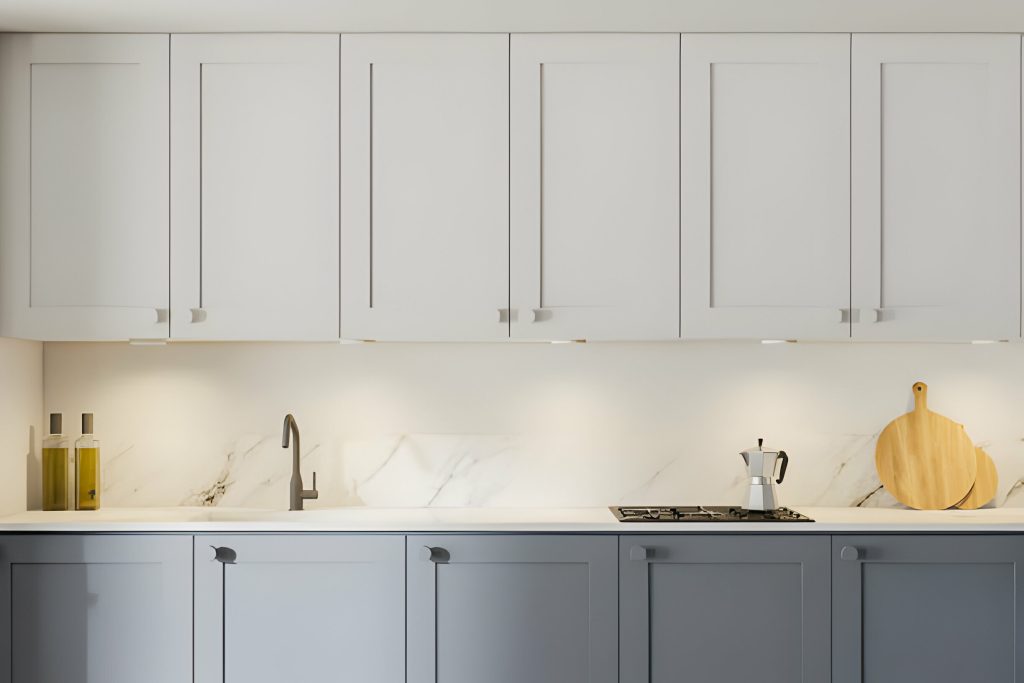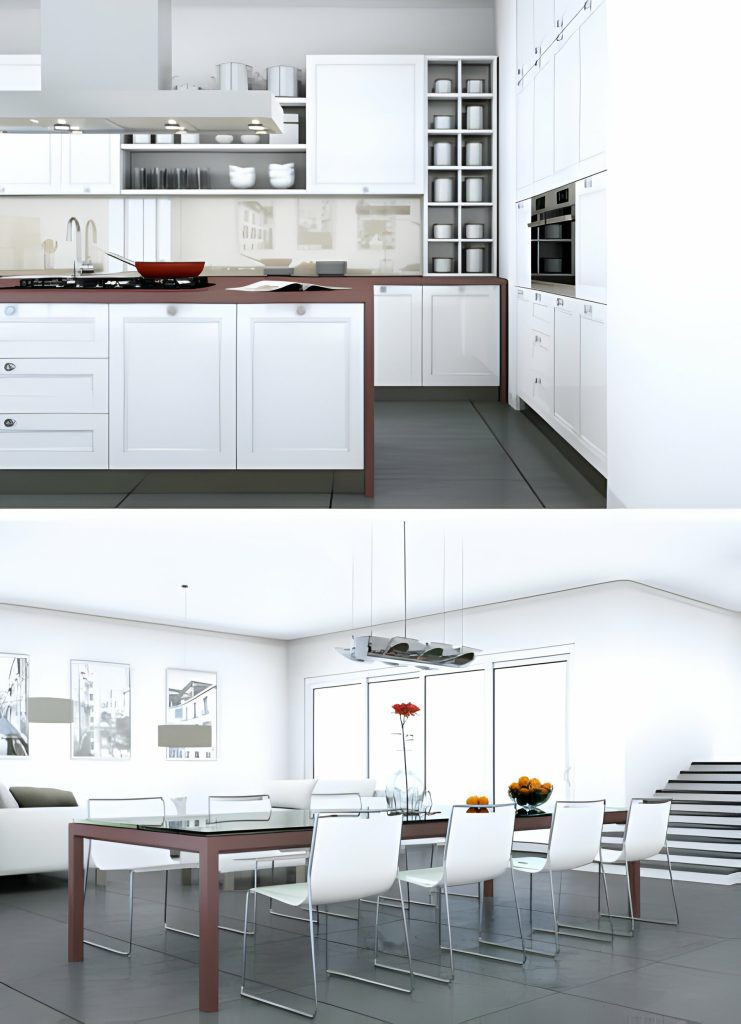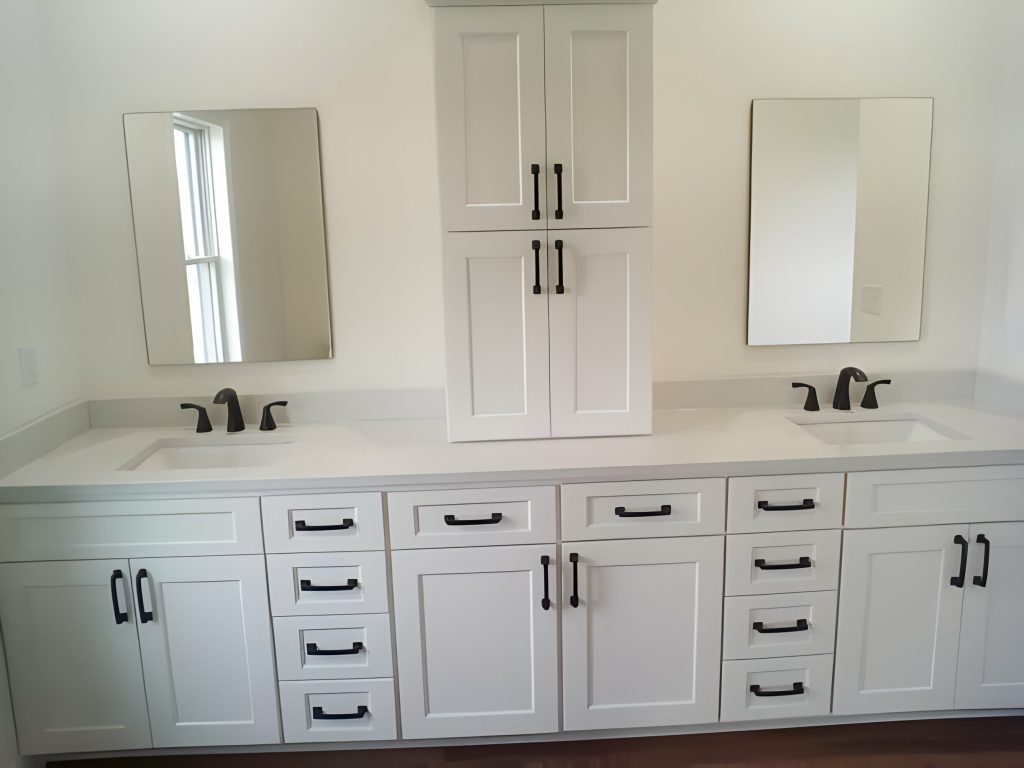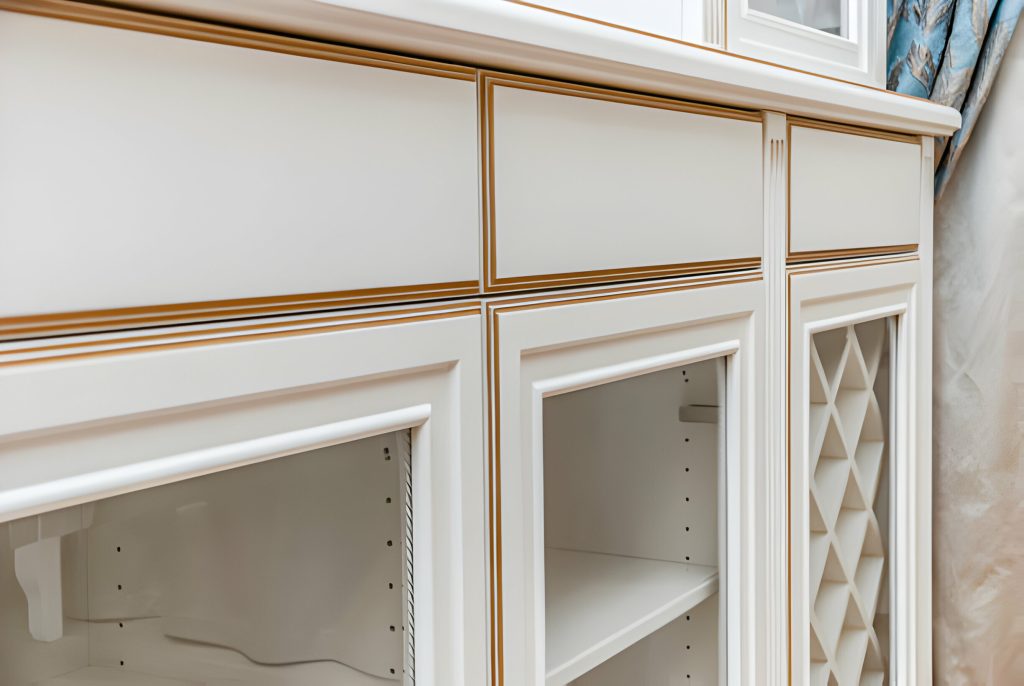Are you remodeling your kitchen and considering different cabinet options? Imagine walking into two kitchens. In one, the cabinets have a sleek, seamless appearance with hidden hinges. In the other, the cabinets have a more traditional look with exposed hinges and intricate detail. What’s the difference? The answer lies in whether they are inset or frameless cabinets. Let’s explore these two construction methods to help you make an informed decision for your kitchen upgrade.
Cabinet Construction Methods
If you’re looking to understand the difference between inset and frameless cabinets, it’s important to know the various cabinet construction methods. Cabinet styles can vary greatly depending on how they are constructed. The materials used in the construction of cabinets also play a significant role in their overall appearance and durability. Some common materials used include solid wood, plywood, and particleboard. Durability factors such as the type of joinery used and the quality of hardware also impact how long your cabinets will last. Maintenance requirements can differ depending on the construction method, with some cabinets requiring more frequent upkeep than others. Lastly, customization options vary based on the type of cabinet construction, allowing you to tailor your cabinets to suit your specific needs and preferences.
Definition of Inset Cabinets
The definition of inset cabinets is that they are designed to sit flush with the face frame of the cabinet. This means that the door or drawer front is set into the cabinet frame, creating a sleek and seamless look. Inset cabinets are known for their traditional and timeless appeal, adding a touch of elegance to any space.
When it comes to construction, inset cabinets require precise measurements and skilled craftsmanship. They have a more intricate design compared to other cabinet types, making them slightly more expensive than frameless cabinets. However, inset cabinets offer a wide range of design options, including different materials, finishes, and hardware choices.
In terms of cost differences between inset and frameless cabinets, it’s important to note that while inset cabinets may be pricier upfront due to their construction complexity, they can also add value to your home in the long run due to their high-quality craftsmanship and classic aesthetics.
Definition of Frameless Cabinets
Frameless cabinets are designed without a face frame, resulting in a sleek and modern look. Here are three things you should know about frameless cabinets:
- Cabinet Styles: Frameless cabinets offer a versatile range of styles to suit your taste and kitchen design. Whether you prefer a minimalist, contemporary look or a more traditional aesthetic, frameless cabinets can be customized to fit any style.
- Cabinet Materials: Frameless cabinets are typically made from high-quality materials such as plywood or particleboard. These materials provide durability and stability to the cabinet structure, ensuring that your cabinets will last for years to come.
- Cabinet Functionality: Frameless cabinets maximize storage space by eliminating the need for a face frame, allowing for more usable interior space. With their full-overlay doors and drawers, frameless cabinets provide easy access to all your kitchen essentials.
When it comes to cabinet finishes and hardware options, frameless cabinets offer endless possibilities to enhance the overall look and functionality of your kitchen.
Comparison of Construction Techniques
One key factor to consider when comparing construction techniques is the overall durability and stability of the cabinets. Cabinet construction techniques can vary greatly depending on the materials used, design variations, installation process, and cost analysis. Inset cabinets are known for their traditional look and are constructed with a frame that is fitted inside the cabinet box. This construction technique provides added strength and stability to the cabinets, making them highly durable. On the other hand, frameless cabinets have a more contemporary design and do not have a face frame. Instead, they rely on thicker side panels for support. While this construction technique may result in slightly less durability compared to inset cabinets, it allows for easier access to the cabinet interiors and maximizes storage space.
Pros and Cons of Inset Cabinets
When considering inset cabinets, you should take into account the traditional look they provide and their added durability and stability. Here are three reasons why choosing inset cabinets may be beneficial:
- Aesthetics: Inset cabinets offer a timeless and elegant appearance that can enhance the overall design of your space. The clean lines and seamless integration create a polished and sophisticated look.
- Durability: These cabinets are built to last. With their solid construction and sturdy hinges, inset cabinets can withstand daily wear and tear without sacrificing functionality or quality.
- Maintenance: Cleaning is a breeze with inset cabinets. Since the doors sit flush within the cabinet frame, there are no gaps for dust or debris to accumulate. This makes maintenance quick and easy, ensuring that your cabinets stay looking pristine for years to come.
While inset cabinets have many advantages, it’s important to consider some potential drawbacks as well:
- Limited storage space: Due to their design, inset cabinets may have slightly less storage capacity compared to other types of cabinetry.
- Higher cost: The precision craftsmanship required for inset cabinetry often results in higher manufacturing costs.
- Installation complexity: Proper installation of inset cabinets requires precise measurements and skilled craftsmanship.
Overall, if you value durability, aesthetics, and low maintenance in your kitchen or bathroom remodel project, then inset cabinets may be an excellent choice for you.
Pros and Cons of Frameless Cabinets
If you’re looking for a sleek and modern design for your kitchen or bathroom, opting for frameless cabinets can give your space a contemporary and streamlined look. Frameless cabinets are known for their space-saving capabilities and easy access to the contents inside. While they may have limited design options compared to traditional framed cabinets, they make up for it with their clean lines and minimalist aesthetic.
| Pros | Cons |
|---|---|
| Space-saving | Limited design options |
| Contemporary design | Requires professional installation |
| Easy access to contents | More expensive than framed cabinets |
| Sleek and streamlined look | Less durability compared to framed cabinets |
Frameless cabinets are ideal for those who want a modern and functional kitchen or bathroom. They provide ample storage space while maintaining an open and airy feel. However, it’s important to consider the higher cost of installation and potential decrease in durability when choosing frameless cabinets for your home.
Design Options for Inset Cabinets
The design options for inset cabinets are more varied and customizable compared to other cabinet styles. Here are three ways you can make your inset cabinets truly unique:
- Hardware Choices: With inset cabinets, you have the freedom to choose from a wide range of hardware options. From sleek and modern handles to vintage-inspired knobs, you can find the perfect hardware that complements your overall design aesthetic.
- Color Palettes: Inset cabinets can be easily customized to match any color palette you desire. Whether you prefer bold and vibrant hues or subtle and soft tones, there is a wide array of colors available for you to choose from.
- Material Selection: When it comes to inset cabinets, the material selection is vast. You can opt for traditional wood finishes like oak or cherry, or go for more contemporary materials like glass or metal. The choice is yours!
Don’t forget about adding decorative accents like crown molding or glass panels to further enhance the beauty of your inset cabinets. The possibilities are endless when it comes to designing your dream kitchen with inset cabinets!
Design Options for Frameless Cabinets
One of the advantages of frameless cabinets is that they offer a sleek and modern look for your kitchen. When it comes to design options, frameless cabinets provide a wide range of choices to suit your style and preferences. You have numerous color choices available, allowing you to match the cabinets seamlessly with your existing decor or create a bold statement with contrasting colors. Additionally, there are various hardware options to add personality and functionality to your cabinets. From classic handles to contemporary pulls, you can customize the look and feel of your frameless cabinets. Moreover, material selection plays a crucial role in achieving the desired aesthetic. Frameless cabinets can be made from different materials such as wood veneer or laminate, giving you even more customization possibilities for your kitchen design.
Cost Differences Between Inset and Frameless Cabinets
Now that you have explored the design options for frameless cabinets, let’s delve into the cost differences between inset and frameless cabinets. When it comes to material selection, both types offer a wide range of choices, allowing you to find the perfect fit for your style and budget. As for customization options, inset cabinets often provide more flexibility with intricate details like decorative moldings and exposed hinges. On the other hand, frameless cabinets offer a sleek and modern look that can be tailored to your preferences. In terms of durability comparison, both types are built to last; however, frameless cabinets may have an edge due to their full overlay construction. Maintenance requirements are relatively similar for both styles—regular cleaning and occasional adjustments may be needed. Lastly, when conducting a long-term cost analysis, consider factors such as initial investment, potential resale value, and any future maintenance or repairs that may arise over time.
Installation Considerations for Inset Cabinets
When considering installation, it’s important to account for the precise measurements required for inset cabinets. Before you begin, make sure you have chosen the right cabinet door styles that will complement your overall design aesthetic. There are various hardware options available for inset cabinets, so think about what kind of handles or knobs would work well with your chosen style. When it comes to material choices, keep in mind that solid wood is a popular option for its durability and timeless appeal. Additionally, consider the color options available and how they will harmonize with your kitchen or bathroom decor. Lastly, don’t forget to factor in countertop considerations when installing inset cabinets as they can greatly impact the overall look and functionality of your space.
Installation Considerations for Frameless Cabinets
It’s important to consider the measurements required for frameless cabinet installation. When installing these cabinets, there are a few key things to keep in mind:
- Installation Challenges: Frameless cabinets can be more challenging to install compared to traditional framed cabinets. They require precise measurements and leveling to ensure a seamless fit.
- Space Requirements: Frameless cabinets offer more interior storage space compared to their framed counterparts. However, they do require adequate wall space for proper installation.
- Hardware Options and Customization Possibilities: With frameless cabinets, you have a wide range of hardware options available, such as handles or knobs, that can enhance the look of your cabinets. Additionally, frameless cabinets allow for more customization possibilities in terms of shelving and drawer configurations.
When it comes to maintenance tips for frameless cabinets, regular cleaning with mild soap and water is sufficient. Avoid using harsh chemicals or abrasive cleaners that may damage the finish.



